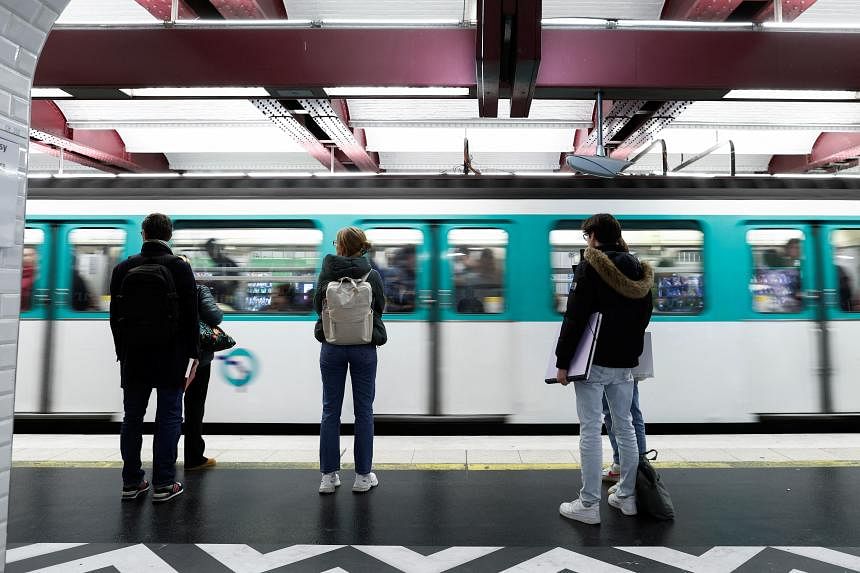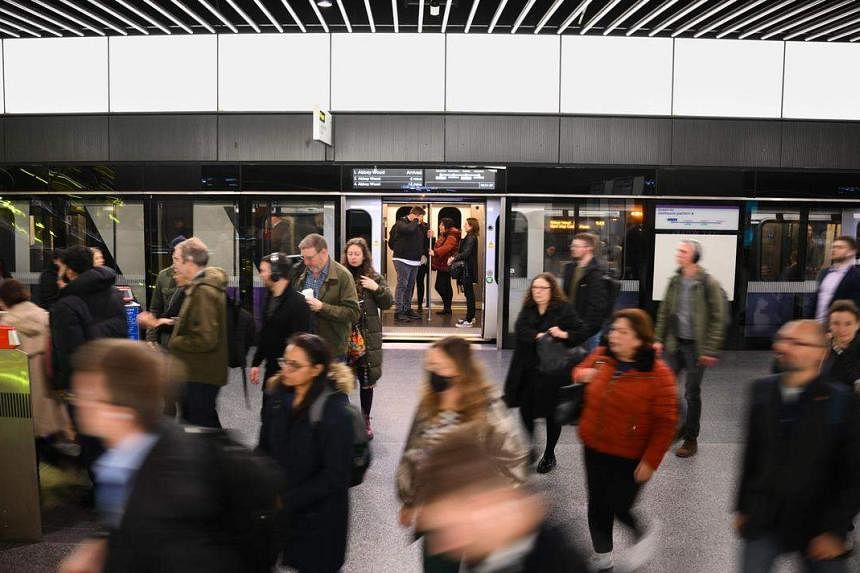London, Paris expand rail networks but studies flag polluted air underground

LONDON - European governments hope to reduce air pollution by persuading their public to make greater use of the extensive underground rail networks in the continent’s biggest cities.
Spurred by its hosting of the Paris Olympics in 2024, France is currently spending €42 billion (S$60 billion) on a gigantic expansion of its public transport, adding 200km of railway tracks and 68 stations to the French capital’s Metro by the end of this decade.
Meanwhile, the British has just added a line to the London underground, named after its late Queen and stretching over 100km at a cost of £20 billion (S$33 billion).
Although the overall environmental benefits of using public transport are not in question, recently published scientific studies have revealed that those tapping the underground networks in these two cities may be subjected to higher fine particle air pollution than in the outside, ambient air.
Fine particle air pollution inside the Paris area Metro is “on average three times higher than in the urban exterior air”, claims a report by French Agency for Food, Environmental and Occupational Health and Safety (Anses).
And the British capital is no better. “Continued exposure” to higher than normal air pollution particles in London’s Underground could “lead to increased cellular toxicity and detrimental health effects”, including adverse cardiovascular and respiratory problems, warns a report released in October by the Global Centre for Clean Air Research based at Britain’s University of Surrey.
Although both the British and French transport systems have been in constant use since the 19th century, their sprawling underground systems remain poorly researched by environmental experts.
Apart from conducting regular tests to ensure that general air quality requirements are met, there are few studies and no consensus about measuring the impact of fine particle air pollution.
In the Paris Metro system, pollution is measured only on platforms, whereas Anses now argues that it should also be done in the hallways of underground stations and train cars.
However, what emerges clearly from both the recent French and British studies is that the air in the underground systems contains what Anses refers to as a “high number of metallic elements, iron in particular, and also of elemental and organic carbon”.
These particles are generated from train cars moving along tracks, brakes rubbing against metal rails and electrical connections.
“You’ve iron rubbing on steel, steel on steel, iron and copper and barium from the brakes,” said Dr David Green from Imperial College London, in an interview for the BBC, Britain’s state-funded broadcaster.
Further fine particle pollution comes from passengers’ hair and skin cells and fragments of their clothing.
And all are pushed along by the trains moving through tunnels.

Some particles – usually under 10 micrometres in diameter, or roughly 0.01mm – are large enough to be caught by the hairs in the nose and throat, so their damage to health may be limited. But those under 2.5 micrometres in diameter can penetrate deep into the lungs.
How harmful they are is a subject of further research, and scientists will also have to consider the period of time passengers are exposed to underground air.
And although research on this is ongoing, calculations may already have to be revised now that people no longer commute to work every day or at the same appointed hour.
Be that as it may, the World Health Organisation (WHO) recently introduced much tougher recommendations, advising that people should not be exposed to fine particles of air pollution exceeding 5 micrograms per cubic metre, half of what was considered safe until now.
The legal, safe limit in both Britain and France – both of which adhere to European Union regulations adopted back in 2008 – now stands at five times the recommended WHO levels.
Still, public interest in this problem is growing.
Last year, Respire (Breathe), a French non-governmental organisation dedicated to defending air quality, sued the state-owned company that operates the Paris Metro, charging it with “aggravated deception” and “unintentional injuries” after recording spikes of up to 500 micrograms per cubic metre at one Paris underground station.
The solution clearly lies in newer rolling stock and better ventilation systems of networks that, on the whole, currently lack air-conditioning facilities.
Meanwhile, French and British government regulators are at pains to remind people that the debate about the potential risks from fine particles of air pollution should not obscure the reality that underground travel remains hugely beneficial to overall pollution reduction efforts.
“We must, of course, continue to promote the Metro, which is a far less polluting mode of transport than internal combustion vehicles,” says an official with Anses.


No comments
Share your thoughts! Tell us your name and class for a gift (: